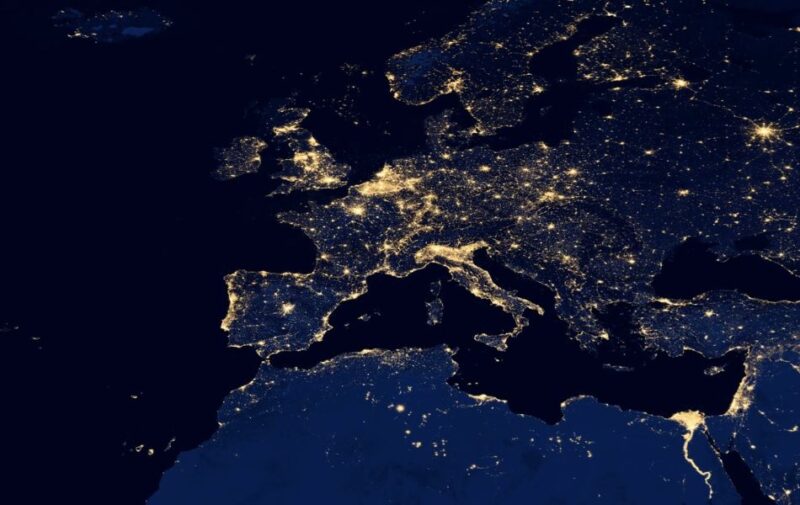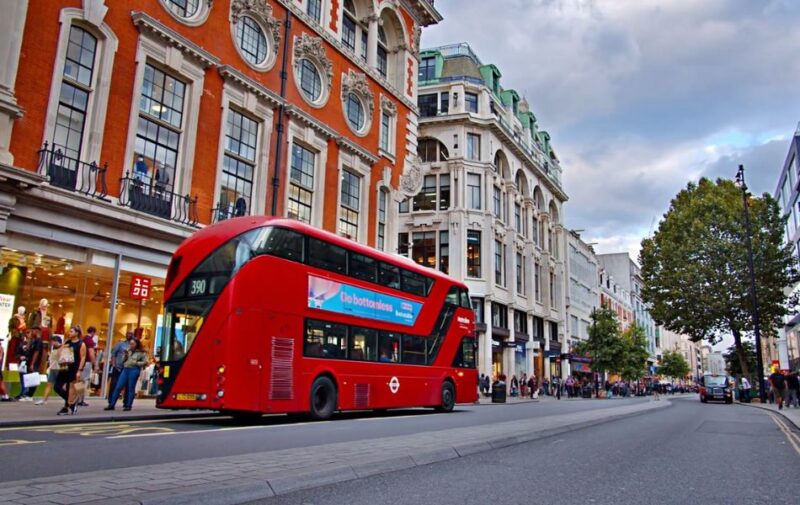When planning a trip to Europe, many imagine strolling through the streets of historic cities, savouring local cuisines, and immersing themselves in rich cultures. However, alongside the appeal, it’s important to recognise the urban risks in Europe.
The most dangerous cities in Europe often hide behind their glamorous facades, and being aware of these potential dangers is paramount for your personal safety in Europe.
While destinations like Paris, London, and Barcelona attract millions of visitors each year with their iconic landmarks and vibrant atmospheres, they also grapple with rising crime rates. Reports indicate that theft, scams, and other urban risks are significant concerns in these bustling metropolises.
For instance, Paris is notorious for petty theft, particularly in crowded tourist spots such as the Eiffel Tower and the Louvre. Similarly, Brussels has become a hotspot for pickpocketing crimes, making it one of the European cities to avoid being too complacent in.
Another city of note is Athens which, despite its rich history and beautiful architecture, faces a growing problem with property crimes and drug-related incidents.
Istanbul, straddling both Europe and Asia, reported a homicide rate of 2.6 per 100,000 people in 2017, alongside a current crime rate of 47.55.
Even cities like Florence, known for their timeless art and culture, are not immune to urban risks, with tourists often being targets for various scams and thefts.
It’s also worth mentioning the broader safety concerns across certain countries. For example, Ukraine’s ongoing conflict with Russia has escalated its danger level, placing it as the most dangerous country in Europe according to the Global Peace Index (GPI).
Turkey, especially outside major cities like Istanbul and Ankara, also demands heightened caution from travelers due to safety risks.
@stefanie.wiesenberg Is Turkey Safe? | American Perspective 🇺🇸 #turkeytravel🇹🇷 #turkeyvacation #cappadociaturkey #travelcouplelife ♬ Epic Music(863502) – Draganov89
Understanding these dynamics is crucial for anyone planning to explore the European continent. The purpose of this article is to delve into the most dangerous cities in Europe, examining the factors contributing to their high crime rates and providing essential safety tips to ensure your travels are secure.
Whether it’s navigating the busy streets of London or enjoying the canals of Amsterdam, knowledge and vigilance are your best companions in mitigating urban risks in Europe.
Stay tuned as we embark on a detailed journey through the complexities of crime in European cities, the most perilous places to visit, and how you can travel safely amidst these challenges.
Crime in European Cities
The landscape of crime in Europe varies significantly across its cities, influenced by socioeconomic factors, population density, and local dynamics. When examining the Global Peace Index (GPI) and other documented data, it becomes evident that certain cities experience disproportionately high crime rates in Europe.
Some renowned examples include Lisbon, Barcelona, and Rome, which have relatively higher crime rates. Examining such patterns contributes to a broader understanding of regional safety nuances.
Factors Contributing to High Crime Rates
One substantial factor impacting high crime rates in Europe is the socioeconomic conditions prevailing in various regions. For instance, cities like Sofia and Bucharest in Eastern Europe exhibit higher crime rates compared to their Western counterparts. Such disparities are further highlighted in Eurostat data, reflecting uneven economic advancement and varying social structures.
Population density also plays a crucial role. Urban areas, often teeming with people, showcase elevated crime statistics.
Historical upheavals, as seen in Belfast, leave lasting imprints on safety profiles, with remnants of gang activities contributing to ongoing concerns.
Furthermore, the cultural dynamics within each city influence crime patterns. Diverse cities like Brussels, while culturally rich, face specific security threats, such as a heightened risk of terrorist attacks. Such concerns underline the multifaceted nature of urban safety.
Global Peace Index and Its Relevance
The Global Peace Index serves as a valuable tool in understanding safety in European cities by offering insights into crime, violence, and related trends. For example, the GPI 2021 report underscores that cities like Lisbon, Barcelona, and Rome have relatively higher crime rates compared to other European cities.
This index also brings to light the contrast between cities like Tallinn and Vilnius, which, despite their low crime rates, face specific crime challenges such as petty theft and regional violence.
Comparatively, cities such as Glasgow and Istanbul portray diverse crime landscapes, indicating both violent and non-violent crimes, necessarily cautioning visitors about specific districts.
Understanding the GPI aids in navigating urban safety, making informed travel choices crucial for an enjoyable and secure experience.
| City | Crime Rate | Key Crime Issues |
|---|---|---|
| Florence | 38.49 | Scams, Stealing Credit Cards, Pickpocketing |
| Glasgow | 45.38 | Murder, Violent Crimes |
| Paris | 55.13 | Pickpocketing, Terrorist Threats |
| Brussels | 51.6 | Terrorist Attacks |
| London | 53.36 | Violent Crime, Gang Activity |
The juxtaposition of these factors reflects the intricate web of elements contributing to crime rates in Europe, highlighting the importance of considering multiple dimensions when assessing urban safety.
Most Dangerous Cities in Europe
Travelling to dangerous cities in Europe necessitates an understanding of the specific challenges each city presents. While some cities are marked by petty crimes like pickpocketing, others grapple with more serious violence.
Here, we delve into the characteristics of some of the risky cities in Europe, offering insights to help you stay vigilant.
Florence, Italy
Florence, though rich with cultural treasures, is also known for its high rate of petty crime.
Tourists should be alert to pickpocketing and credit card theft, especially in bustling areas like the city centre and popular attractions such as the Uffizi Gallery and the Duomo. Being aware of your surroundings and keeping valuables secure can help mitigate these risks.
Paris, France
Considered one of the most iconic cities in the world, Paris also has its areas of caution. The city has a reputation for pickpocketing, especially in crowded tourist spots like the Eiffel Tower, the Louvre, and the Champs-Élysées.
Some districts experience higher rates of violent crime, making it vital for you to remain vigilant while exploring the beauty of the French capital.
London, UK
London, a city with a storied history, faces both historical and contemporary crime challenges. Knife crime and theft remain significant issues in various boroughs. Places like Westminster, Camden, and Southwark can be particularly risky.
Ensuring your safety means staying in well-lit, populated areas and avoiding displaying expensive items in public.
Brussels, Belgium
Brussels stands out not just for its architectural beauty but also for its higher crime rates. The city is known for frequent pickpocketing incidents, particularly around transportation hubs and tourist areas like the Grand Place.
Additionally, Brussels has been a target for terrorist activities, underscoring the importance of staying aware and following local news for safety updates.
Overall, understanding the nature of crime in European capitals can significantly enhance your travel experience. Whether it’s petty theft in Florence or violent crime in London, being informed and cautious can turn potentially risky situations into enriching cultural discoveries.
Travelling Safely in Risky European Cities
Travelling to European cities can be a thrilling adventure, but it is crucial to remain vigilant, especially in areas known for higher crime rates or other dangers.
In this section, you’ll find indispensable safety tips for European cities, the significance of travel insurance, and the essential emergency contacts in Europe to ensure a safe and enjoyable trip.
Safety Tips for Tourists
Staying safe while exploring exciting destinations requires proactive measures. Always be aware of your surroundings and avoid risky areas, particularly at night. For cities like Glasgow and Belfast, gang violence and social divisions necessitate extra caution.
When visiting areas with higher risks like Podgorica or Sarajevo, it’s essential to stay updated on local advisories and avoid isolated places.
Carry minimal cash and avoid displaying expensive items to deter thieves. Always keep a copy of your important documents, such as your passport and travel itinerary.
In cities with higher instances of petty crime and gang violence, such as Malmö and Kyiv, heightened vigilance is paramount. Conditions in Kyiv are especially unpredictable due to the ongoing conflict.
Importance of Travel Insurance
Securing comprehensive travel insurance is a non-negotiable aspect of smart travel planning. This becomes ever more important in cities with greater risk factors. Travel insurance should cover theft, loss, and medical emergencies to provide peace of mind.
For instance, Moscow’s risks associated with mob and gang violence, as well as political unrest, underscore the necessity for robust insurance coverage. Similarly, in cities like London with high occurrences of sharp object incidents, having insurance protects against unexpected medical costs.
Emergency Contacts and Local Authorities
Knowing key emergency contacts in Europe and local authorities greatly enhances your travel security. Familiarize yourself with the European emergency number 112, which can be dialled for immediate assistance anywhere in Europe.
It’s also beneficial to know the contact information for your local embassy or consulate. This is particularly crucial in cities like Kyiv or Moscow, where geopolitical tensions can impact safety swiftly.
In highly touristed yet challenging environments like Milan or Benidorm, your embassy can provide timely advice and support. Luxembourg City, known for its low crime rate, serves as a reminder that while some cities are relatively safe, it’s always wise to be prepared.
Travelling safely is not just about luck; it’s about awareness, preparation, and taking the right precautions to ensure a memorable journey.
View this post on Instagram
Conclusion
As we traverse through the vibrant and culturally rich landscapes of Europe, it is imperative to be aware of the safety challenges posed by certain cities. Understanding the crime dynamics within these urban areas and recognising the factors contributing to higher crime rates can significantly enhance your travel experience.
Cities like Florence, Paris, and London, despite their allure, have elements of risk that necessitate your vigilance and preparedness.






